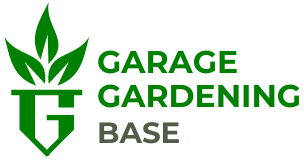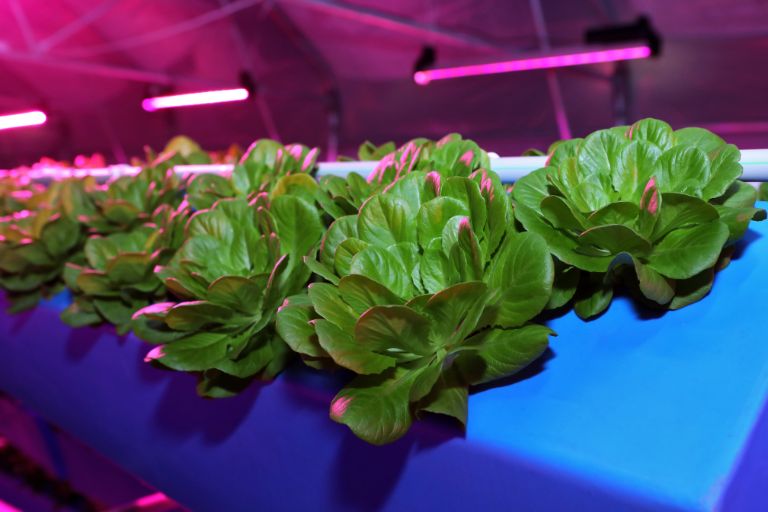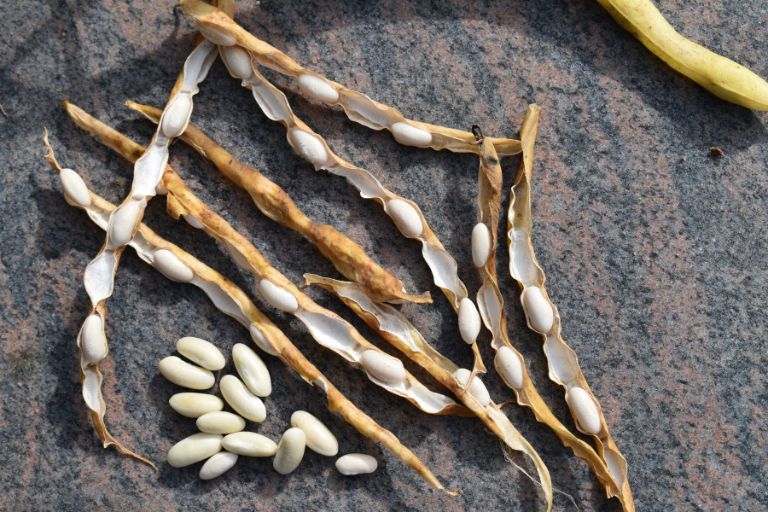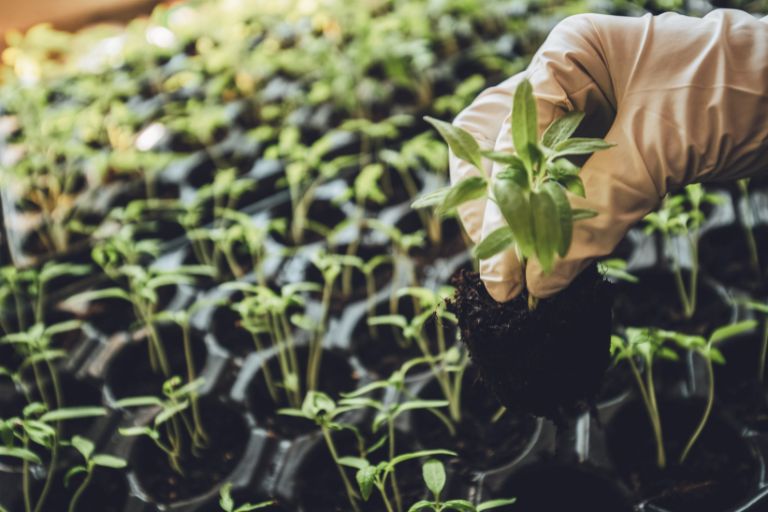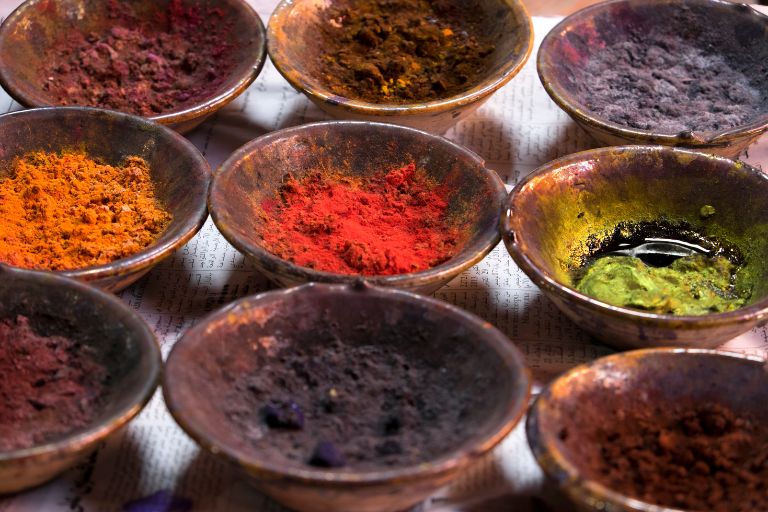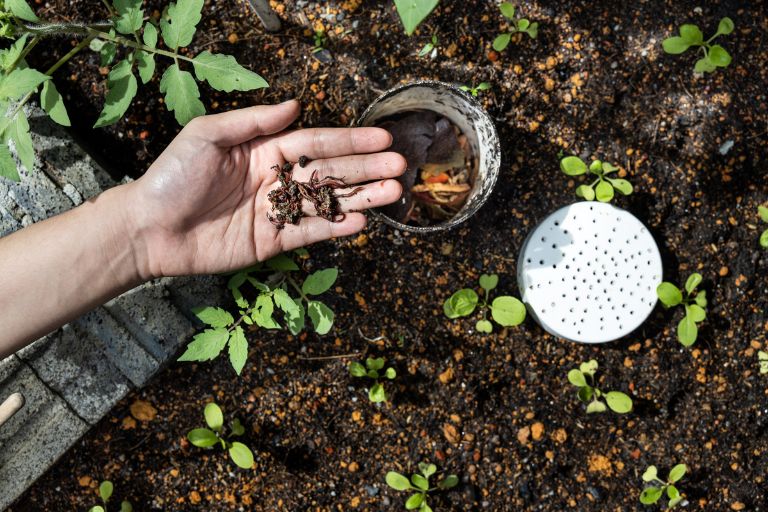A Guide to Growing and Enjoying Edible Flowers in Small Spaces
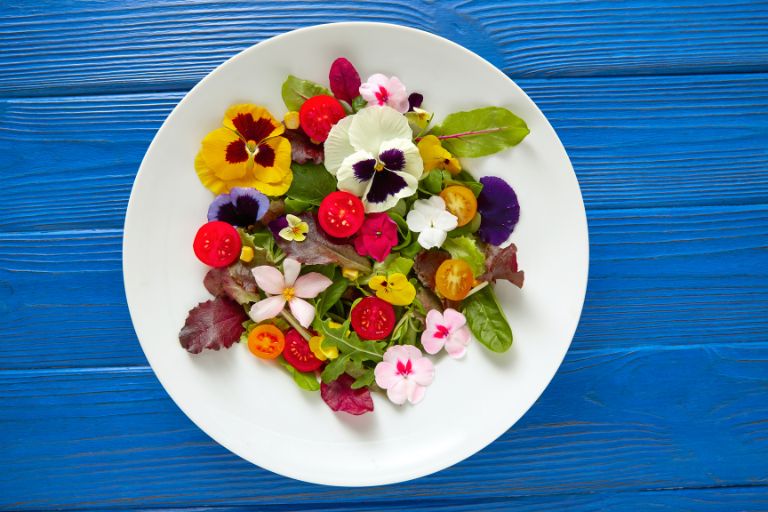
Amidst the concrete confines of city life or the cosy corners of suburban homes, a surprising oasis of beauty and flavour emerges: the garage garden. While traditionally reserved for storage or shelter, garages have evolved into veritable havens for greenery, offering a unique space for cultivating an often overlooked treasure – edible flowers.
In this exploration of garage gardening, we turn our attention to the delicate yet delicious world of edible flowers. Set against a backdrop of tools and machinery, these vibrant petals and delicate blossoms bring a burst of colour and culinary potential to unexpected spaces. Here, in the midst of urban bustle or suburban tranquillity, lies an opportunity to cultivate not just plants, but a feast for the senses.
Join us as we uncover the magic of growing and enjoying edible flowers in the unlikely setting of the garage garden. From selecting the most enticing varieties to mastering the art of growing in confined spaces, we’ll explore the terrain of this fascinating endeavour. Whether you’re an experienced gardener seeking new culinary horizons or a novice enthusiast eager to add beauty and flavour to your surroundings, this guide promises to light the way to a rich bounty like no other.
Maximizing Space
In the cramped confines of a garage, maximising space is key to creating a thriving garden. Fortunately, with a little creativity and strategic planning, even the smallest spaces can be transformed into green havens bursting with life. The following are some techniques and strategies for making the most of limited space in garage gardens:
Vertical Gardening
Vertical gardening is a game changer for garage gardens, allowing you to make the most of vertical surfaces such as walls and fences. This technique involves growing plants upwards rather than outwards, saving valuable floor space. Install vertical garden structures such as trellises, mesh panels or hanging planters along the walls of your garage. Train climbing or vining plants such as peas, beans, cucumbers or even certain types of edible flowers such as nasturtiums to grow upwards. In addition, consider using hanging pockets or vertical planters designed specifically for vertical gardening to further maximise space efficiency.
Container gardening
Container gardening is ideal for garage gardens because you can grow plants in a variety of containers, from traditional pots to repurposed buckets, boxes or even vertical stacking systems. Choose containers of different sizes and shapes to suit different plant types and space constraints. Place containers along shelves, on worktops or on the floor of your garage, making sure there is adequate drainage to prevent waterlogging. This approach not only saves space, but also provides flexibility to rearrange plants as needed and protects against soil contamination, which is common in garage environments.
Use shelving or hanging systems
Shelving and hanging systems offer versatile solutions for organising and displaying plants in garage gardens. Install sturdy shelves or racks along the walls of your garage to create multiple levels for arranging pots and containers. Choose adjustable shelving to accommodate plants of different heights and sizes. Also consider using hanging systems such as hooks, brackets or overhead racks to suspend plants from the ceiling or rafters. Hanging baskets or macramé plant hangers are perfect for trailing or cascading plants such as strawberries, herbs or trailing edible flowers such as nasturtiums or violets.
Compact and versatile plants
If space is at a premium, opt for compact or dwarf varieties of plants that work well in containers and in confined growing conditions. Look for space-saving options such as bush tomatoes, compact herbs such as basil or thyme, or miniature varieties of edible flowers such as dwarf sunflowers or mini pansies. Also consider multifunctional plants that offer both ornamental beauty and edible value, such as edible ornamental peppers or flowering herbs like lavender or borage.
Use every nook and cranny
Make use of every available space in your garage garden, including overlooked areas such as windowsills, doorways or niches. Install window boxes or hanging planters outside garage windows to grow herbs or perennials. Use door-mounted shoe organizers or vertical pockets to create mini herb gardens or plant propagation stations. Get creative with repurposed materials such as old pallets, shoe racks or even guttering to create additional planting space where none existed before.
Selecting Suitable Varieties
When choosing edible flowers for garage gardening, it’s important to choose varieties that will thrive indoors or in low-light conditions, while also being able to adapt to the temperature fluctuations often found in garage environments. The following are some popular options that are well suited to garage gardening conditions:
Pansies (Viola × wittrockiana)
Pansies are versatile and hardy flowers that can thrive in the relatively cooler temperatures often found in garages. They prefer partial shade and can tolerate lower light levels, making them ideal for indoor gardening. Pansies come in a wide range of colours and have a mild, slightly sweet flavour, making them perfect for adding colour and a subtle floral flavour to salads, desserts or drinks.
Nasturtiums (Tropaeolum majus)
Nasturtiums are hardy annuals that are well suited to conservatory conditions. They thrive in full sun to partial shade and are tolerant of cooler temperatures, making them an excellent choice for indoor or low-light environments. Nasturtiums produce bright orange, yellow or red flowers with a peppery flavour reminiscent of watercress. Both the flowers and the leaves are edible and can be used to add a spicy kick to salads, sandwiches or garnishes.
Violets (Viola spp.)
Violets are charming, delicate flowers that can thrive in the cooler temperatures typically found in garages. They prefer partial shade and can tolerate lower light levels, making them suitable for indoor gardening. Violets come in various shades of purple, blue, white and yellow and have a subtle sweet flavour with a hint of floral notes. The flowers can be used fresh in salads, desserts or as a decorative accent in drinks.
Calendula (Calendula officinalis)
Calendula, also known as pot marigold, is a hardy annual that is well adapted to a wide range of growing conditions, including garage gardens. It thrives in full sun to partial shade and is tolerant of cooler temperatures, making it suitable for indoor or low light environments. Calendula produces bright orange or yellow flowers with a slightly tangy, peppery flavour. The petals can be used fresh in salads, soups and stews, or dried for use in teas, infusions or as a natural dye.
Marigolds (Tagetes spp.)
Marigolds are hardy annuals that are well suited to conservatory conditions. They thrive in full sun and are tolerant of a wide range of temperatures, making them adaptable to both indoor and outdoor environments. Marigolds produce bright yellow, orange or red flowers with a citrusy, slightly bitter flavour. The petals can be used fresh in salads, soups or as a colourful garnish.
These edible flowers offer both visual appeal and culinary versatility, making them an excellent choice for garage gardens.
Growing Tips and Techniques
Growing edible flowers in a garage environment requires careful attention to several key factors to ensure successful cultivation, especially for busy gardeners looking for low-maintenance options. Below you’ll find practical advice on growing edible flowers in your garage:
Soil preparation
Use a good quality potting mix or well-draining soil to provide the necessary nutrients and drainage for healthy plant growth. Fill containers or planting beds with fresh soil, leaving some space at the top for watering. Consider adding organic matter such as compost or aged manure to improve soil structure and fertility. Avoid using garden soil from outside as it may contain pests or pathogens that could harm your plants.
Watering schedule
Establish a regular watering schedule to keep the soil evenly moist but not soggy. Check the moisture level of the soil regularly by inserting your finger into the soil to the first knuckle – if it feels dry, it’s time to water. Water your edibles early in the day to allow excess moisture to evaporate and reduce the risk of fungal disease. Be careful not to overwater as this can lead to root rot and other problems.
Temperature control
Maintain a consistent temperature range in your greenhouse to ensure optimum growth and flowering of edibles. Aim for temperatures between 60°F to 75°F (15°C to 24°C) during the day and slightly cooler at night. Use a thermometer to monitor temperature fluctuations and adjust as necessary. Consider using fans or ventilation to improve air circulation and prevent overheating in warmer months. In colder seasons, use space heaters or heat mats to provide supplemental heat to maintain adequate heat for plant growth.
Light requirements
Edible flowers need enough light to thrive, so make sure they get enough sunlight or supplemental lighting in your garage. Place plants near windows or use grow lights to provide the necessary light intensity for healthy growth. Rotate plants regularly to ensure even exposure to light and to prevent uneven growth or stretching. Monitor light levels with a light meter or by observing plant growth – if plants appear leggy or pale, they may need more light.
Pest management
Prevent pest infestations by practicing good hygiene and regularly inspecting plants for signs of pests or disease. Remove dead or diseased plant material immediately to reduce the risk of spread. Consider using natural pest control methods such as neem oil, insecticidal soaps or biological controls such as predatory insects to effectively manage pest populations. Avoid the use of chemical pesticides, especially indoors, to minimise exposure to harmful substances.
Low-maintenance options
Choose low-maintenance edible flowers that are hardy and easy to grow, requiring minimal care and attention. Options such as marigolds, nasturtiums and pansies are relatively hardy and forgiving, making them ideal for busy gardeners. Focus on providing the essentials – adequate light, water and nutrients – and avoid overcomplicating the care routine with unnecessary interventions.
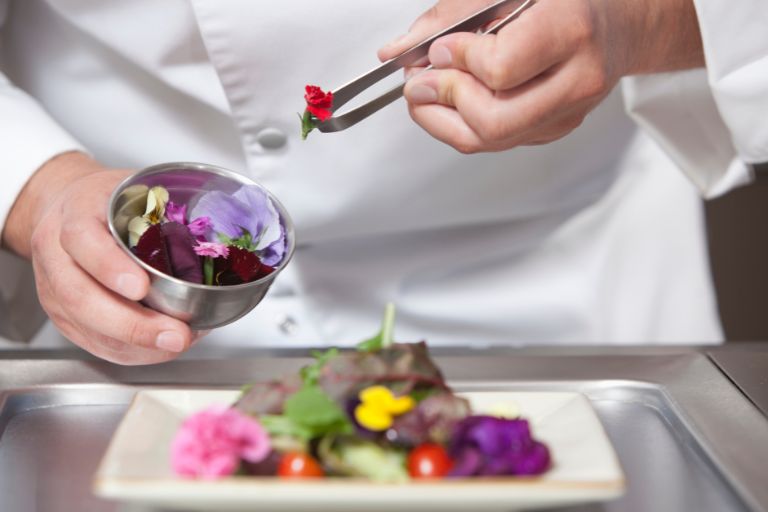
Harvesting and Consumption
Harvesting edible flowers is a delicate process that requires care to ensure optimal flavour, freshness and safety. The following are some best practices for harvesting and incorporating edible flowers into culinary creations:
Harvest edible flowers
– Harvest flowers in the morning when they are freshest and fullest.
– Choose flowers that are fully open but not overripe or wilting.
– Use clean, sharp scissors or shears to cut the flowers from the plant, leaving a short stem attached.
– Handle flowers gently to avoid damaging the delicate petals.
– Avoid picking flowers that have been treated with pesticides or other chemicals. If you are unsure, grow your own flowers using organic methods or buy from reputable sources.
Store edible flowers
– Place harvested flowers in a shallow container lined with damp paper towels to retain moisture.
– Store flowers in the fridge for up to a few days, but use them as soon as possible for the best flavour and appearance.
– Avoid storing flowers with fruits or vegetables that emit ethylene gas as this can cause the flowers to wilt more quickly.
Creative culinary uses
Salads – Add fresh edible flowers to salads for a splash of colour and flavour. Choose flowers with mild, sweet or peppery flavours such as pansies, nasturtiums or violets. Sprinkle petals over mixed greens or make a salad entirely of edible flowers for a visually stunning dish.
Desserts – Decorate cakes, cupcakes or pastries with edible flowers for an elegant touch. Candied flowers, such as rose petals or lavender, make beautiful and fragrant garnishes. Add floral flavours to desserts by steeping flowers in cream, syrup or infusion for use in recipes such as custards, ice creams or sorbets.
Drinks – Use edible flowers to garnish cocktails, mocktails or infused waters. Float flowers such as hibiscus or borage in ice cubes for a decorative touch. Brew flower teas with fresh or dried flowers, or make flower syrups to sweeten drinks and add a subtle floral note.
Garnish – Enhance savoury dishes with edible flower garnishes. Sprinkle petals over soups, risottos or pasta dishes for a colourful accent. Use whole flowers to garnish hors d’oeuvres, canapés or cheese platters to add visual appeal and a hint of flavour.
Recipe ideas
Nasturtium and goat cheese salad – Toss mixed greens with sliced strawberries, crumbled goat cheese and nasturtium petals. Dress with balsamic vinaigrette for a refreshing and flavourful salad.
Lavender Honey Panna Cotta – Infuse dried lavender flowers into heavy cream, then strain to make a creamy panna cotta. Serve with a drizzle of honey and fresh berries for a decadent dessert.
Rose petal lemonade – Make a simple syrup by boiling water, sugar and rose petals until fragrant. Strain and chill, then mix with freshly squeezed lemon juice and water for a refreshing floral lemonade.
Marigold and Tomato Bruschetta – Top toasted baguette slices with diced tomatoes, minced garlic, fresh basil and marigold petals. Finish with a drizzle of balsamic vinegar for a vibrant and flavoursome starter.
Benefits Beyond the Plate
Growing edible flowers in a garage garden has many benefits beyond simply providing ingredients for culinary creations. The following are some of the additional benefits of growing these flowers in a garage environment:
Aesthetic appeal
Edible flowers add beauty and colour to garage gardens, transforming utilitarian spaces into vibrant and inviting sanctuaries. The variety of colours, shapes and textures offered by edible flowers can enhance the visual appeal of the garage, creating a more pleasant and welcoming atmosphere for residents and visitors alike.
Aromatherapy
Many edible flowers have delightful scents that can perfume the air and enhance the sensory experience of the garage garden. Scented flowers such as lavender, roses and jasmine fill the room with their sweet, floral scents, promoting relaxation, stress relief and a sense of well-being.
Supporting pollinators
– Edible flowers play a vital role in supporting pollinators such as bees, butterflies and hummingbirds, which are essential for pollinating fruits, vegetables and other flowering plants. By growing a variety of edible flowers in your garage garden, you can provide valuable food and habitat for these beneficial insects and animals.
– Pollinator-friendly plants such as lavender, borage and marigold attract bees and butterflies with their nectar-rich flowers, helping to maintain local pollinator populations and promote biodiversity. Encouraging pollinator activity in garage gardens not only benefits the surrounding ecosystem, but also increases garden productivity by ensuring efficient pollination of food crops and flowering plants.
Contributing to well-being
– The presence of edible flowers in garage gardens can contribute to residents’ sense of well-being and connection to nature. Engaging with plants, tending to their needs and observing their growth and flowering cycles can promote feelings of fulfilment, purpose and satisfaction.
– Gardening has been shown to have therapeutic effects on mental and emotional health, reducing stress, anxiety and depression while promoting a sense of calm, mindfulness and connection to the natural world. By incorporating edible flowers into garage gardens, people can reap the psychological benefits of gardening without needing access to outdoor spaces.
Safety Considerations
When it comes to consuming edible flowers, it’s important to prioritise safety and exercise caution to avoid potential risks associated with toxicity or pesticide exposure. The following are some important safety considerations for garage gardeners growing and consuming edible flowers:
Proper identification
– Before eating edible flowers, it’s important to accurately identify the plant species and verify its edibility. Some flowers look very similar to poisonous varieties, so it’s important to consult reliable sources such as reputable gardening books, websites or experienced gardeners.
– Familiarise yourself with common edible flowers and their distinctive characteristics to help distinguish them from potentially harmful lookalikes. Be especially careful when harvesting wildflowers or unfamiliar species, and err on the side of caution if you’re unsure of a plant’s identity.
Avoid toxic varieties
– Use caution when choosing edible flowers for consumption and avoid varieties known to be toxic or potentially harmful. Some flowers, such as foxglove, lily of the valley and monkshood, contain compounds that can cause serious illness or even death if ingested.
– Stick to familiar and widely recognised edible flowers such as pansies, nasturtiums, violets and marigolds to minimise the risk of accidental poisoning. If in doubt, do not eat any flowers until you have verified their safety through reliable sources.
Pesticide use
– Be aware of potential pesticide contamination when growing edible flowers, especially in garage gardens where chemical exposure may be a concern. Avoid using pesticides, herbicides or other chemical treatments on or near plants intended for consumption.
– If pest problems do occur, consider using natural or organic pest control methods such as hand-picking pests, applying insecticidal soaps or oils, or introducing beneficial insects to control pest populations. Prioritise environmentally friendly approaches to pest control to minimise risks to human health and the environment.
Thorough cleaning
– Before using edible flowers in culinary preparations, they should be thoroughly cleaned to remove any dirt, debris or potential contaminants. Gently rinse flowers under running water and pat dry with paper towels or air dry before use.
– Avoid washing flowers too close to use to prevent wilting or loss of flavour. Clean flowers immediately before incorporating them into recipes or serving them as garnishes for optimal freshness and safety.
In this article, we’ve explored the enchanting world of edible flowers and their transformative potential in the garage. From the humble pansy to the vibrant nasturtium, these flowers offer not only beauty and flavour, but a host of benefits that enrich the senses and nurture the soul.
Using techniques such as vertical gardening, container gardening and strategic shelving, even the smallest spaces can be transformed into vibrant havens bursting with life. We’ve looked at the practicalities of soil preparation, watering schedules, temperature control and pest management, offering guidance tailored to the busy lifestyles of garage gardeners.
As well as their culinary potential, edible flowers bring aesthetic appeal, aromatherapy benefits and support for pollinators, enriching the ambience of the garage and fostering a deeper connection with nature. However, we’ve also emphasised the importance of safety, urging readers to take care with proper identification, pesticide use and cleaning practices to ensure a delightful and risk-free experience.
